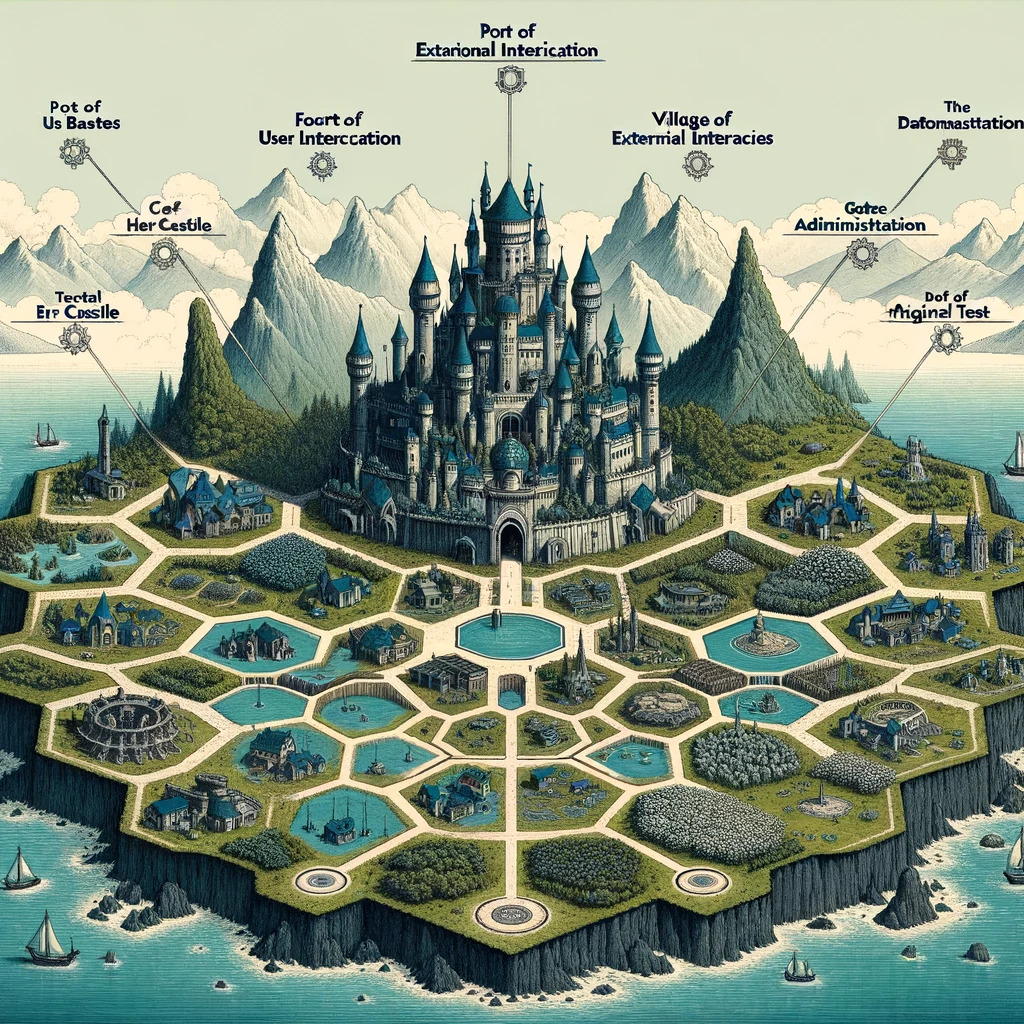The Island of Hexagonia: A Tale of Hexagonal Architecture
 Brahim Bahaida
Brahim Bahaida
In the vast ocean of software design, there was an island named Hexagonia, known for its unique hexagonal shape. At the heart of Hexagonia lay a magnificent castle, the Core Castle, which housed the island’s most precious treasures — its logic and rules, governed by Queen Analytica.
The six sides of the island were connected to the Core Castle through six sturdy bridges. Each bridge led to a different realm of the island:
The Port of Data, where traders brought in data treasures from the Database Sea.
The Forest of User Interaction, where messages were passed through the trees by the UI birds.
The Mountain of External Services, where clouds carried information from distant services.
The Village of Test, a place where every new idea from the castle was tried and tested.
The Gate of Administration, through which the admins commanded the operational aspects.
The Dock of Third-Party Integrations, where ships from other islands brought goods and services.
Queen Analytica ruled wisely, ensuring that the Core Castle remained pure and unaffected by the activities in these realms. She appointed six guardians, one for each bridge, to ensure that anything coming into the castle was translated into a form the castle could understand and use without compromising its integrity.
This system allowed the realms to evolve independently. New bridges could be built, old ones could be replaced, and the realms could change their ways without ever disturbing the peace within the Core Castle. The castle’s treasures — the business logic and application rules — remained safe and sound, guarded by the principles of isolation.
The Technical Takeaway
In this story, Hexagonia represents an application designed with Hexagonal Architecture. The Core Castle symbolizes the application’s core, containing the business logic and application rules. The six realms connected to the castle through bridges represent the interfaces or ports through which the core interacts with external components like databases (The Port of Data), user interfaces (The Forest of User Interaction), external services (The Mountain of External Services), and so on.
The guardians of the bridges are akin to adapters in Hexagonal Architecture, which translate external communications (data formats, method calls) into a form that the application core can understand, and vice versa. This design ensures that changes in external components (like switching a database or changing a third-party service) do not affect the core application logic, thus making the system flexible, maintainable, and scalable.
Just as Hexagonia’s design allowed it to adapt and evolve without compromising its core, Hexagonal Architecture helps in creating systems that are resilient to changes in external technologies or business requirements, focusing on isolating the core logic from external influences.
Subscribe to my newsletter
Read articles from Brahim Bahaida directly inside your inbox. Subscribe to the newsletter, and don't miss out.
Written by
